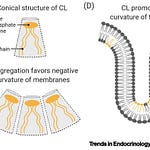Hello,
Today is Day 2 of the American College of Medical Genetics (ACMG) Annual Meeting in Los Angeles. In this podcast, I discuss a few sessions for today (Wed, March 19) that may be of interest to trainees:
The “Early Genetics Trainee and Faculty Forum (Clinical Genetics) - Where Are We Headed?” (8:00 am) will feature Dr. Mira Irons, president of ACMG, and Dr. Sean McCandless, section head of genetics at Colorado Children’s Hospital, among others. They will be discussing the future role of clinical geneticists, especially as genetic testing becomes more accessible. How might our specialty evolve beyond ordering and interpreting genetic tests?
The “Foundation Awards & Presidential Plenary Session” (10:00 AM) is the one session today where everyone at the conference will be gathered. The theme this year is “Genetics in the Media” and will covering how genetics is portrayed in film and social media. Speakers include Dr. Susan Klugman, immediate past president of ACMG.
Over lunch, there are a number of sponsored sessions to consider. One session titled “Getting the Most Out of Your Genome” (sponsored by Illumina) may be of interest. Illumina, a leader in short-read sequencing technology, will discuss the role of clinical RNA sequencing. One example of when clinical RNA sequencing can be useful is when dealing with a variant of uncertain significance (VUS) that is suspected to impact splicing. If you are interested in laboratory genetics or variant interpretation, this session is worth checking out.
In the early afternoon (1:30 pm), there is a session titled “Evolution of Cytogenomic Technology – Optical Genome Mapping”. Optical genome mapping (OGM) is a technique that detects structural variants (e.g. insertions, deletions, inversions, and translocations) across the genome at high resolution (kilobases). I think of this technology of being like an ultra-detailed karyotype plus microarray in one. Because of this, OGM could be used by cytogenetics laboratories in undiagnosed patients with suspected Mendelian disorders as well as for detecting structural variants in somatic cancers.
In the mid-afternoon (3:30pm), there is a session titled "Diagnostic Dilemmas from the Undiagnosed Diseases Network (UDN)." The UDN is a group of researchers across multiple academic medical centers that help find diagnoses for patients with suspected monogenic disorders. To do this, they apply technologies like RNA sequencing, metabolomics, proteomics, and model organism studies on a research basis to patient samples. Patients have to apply to the UDN (not all are accepted due to limited resources), and a letter from a physician is required. If you have patients where you suspect they have a monogenic disorder despite negative exome sequencing, this is a good resource to keep in mind.
In the late afternoon, there will be time to browse the exhibit hall, and the first round of the Geneius challenge (6 pm) will begin. The Geneius challenge involves trainees who are competing for a prize based on how quickly they can respond to questions about genetics.
Feel free to share your thoughts, and see you in the next post!
Daniel









Share this post